<< Our Photo Pages >> Bodrum Museum of Underwater Archaeology - Museum in Turkey
Submitted by davidmorgan on Friday, 17 February 2017 Page Views: 10986
MuseumsSite Name: Bodrum Museum of Underwater ArchaeologyCountry: Turkey Type: Museum
Nearest Town: Bodrum
Latitude: 37.031687N Longitude: 27.429450E
Condition:
| 5 | Perfect |
| 4 | Almost Perfect |
| 3 | Reasonable but with some damage |
| 2 | Ruined but still recognisable as an ancient site |
| 1 | Pretty much destroyed, possibly visible as crop marks |
| 0 | No data. |
| -1 | Completely destroyed |
| 5 | Superb |
| 4 | Good |
| 3 | Ordinary |
| 2 | Not Good |
| 1 | Awful |
| 0 | No data. |
| 5 | Can be driven to, probably with disabled access |
| 4 | Short walk on a footpath |
| 3 | Requiring a bit more of a walk |
| 2 | A long walk |
| 1 | In the middle of nowhere, a nightmare to find |
| 0 | No data. |
| 5 | co-ordinates taken by GPS or official recorded co-ordinates |
| 4 | co-ordinates scaled from a detailed map |
| 3 | co-ordinates scaled from a bad map |
| 2 | co-ordinates of the nearest village |
| 1 | co-ordinates of the nearest town |
| 0 | no data |
Internal Links:
External Links:
I have visited· I would like to visit
TheCaptain visited on 18th Sep 2002 - their rating: Cond: 5 Amb: 4 Access: 4 My notes from my sailing log book of my visit.
The wind has got up overnight again, and is W 6-7 out in the main sea area, with 2m swell. We are going nowhere today. Catch the Dolmus to Bodrum to do the tourist thing, spend the morning visiting the Halicarnassus Mausoleum, and afternoon in the Bodrum Castle and shipwrecks museum. A good day to be stuck in harbour. The Dolmus takes about 20 minutes and costs about 30p each. Brilliant.
After lunch, its to the castle, which includes the Museum of Underwater Archaeology. This is all absolutely brilliant, with shipwrecks and their finds found round the local coast dating back to the bronze age. In various castle rooms are different shipwrecks, arranged as they were found, and as the ships would have been. I particularly liked the 12th Century BC wreck with its ingots of copper, and there is some amazing glass ware from the 11th century “Glass ship”. And masses and masses of amphorae from throughout the millenia.
davidmorgan have visited here

The museum received a special commendation in 1995 as a European Museum of the Year. Initially, the restoration of the castle was the priority; later, exhibition halls were created in the available space.
The Bronze Age Shipwrecks exhibit displays interesting findings recovered from sunken trading vessels discovered by local sponge divers. The artefacts, from the 13th and 16th century BCE, are indispensable for understanding the late Bronze Age. Also on display is the world’s oldest known shipwreck, also one of the richest finds, discovered at Uluburun in 1982.
Information from Bodrum Travel.
Visiting Times: See the Turkish Museums website.
Note: Goddess sculpture found in the Aegean Sea, the biggest ever in Turkish underwater archaeology. See the latest comment on our page.
You may be viewing yesterday's version of this page. To see the most up to date information please register for a free account.

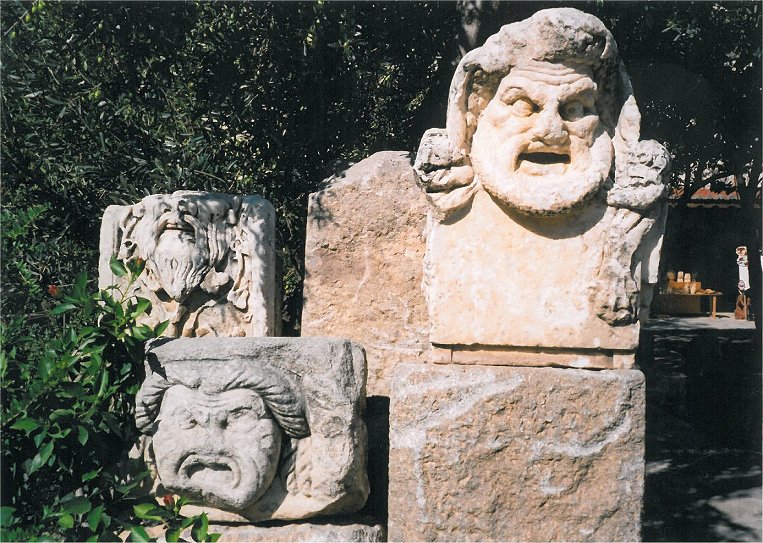
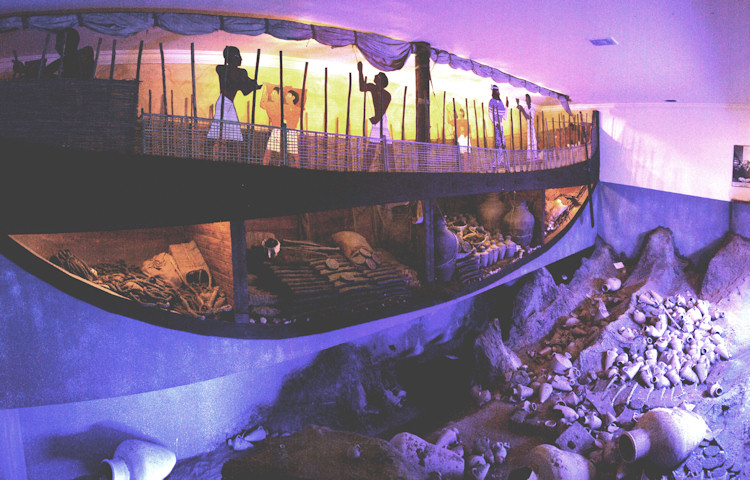


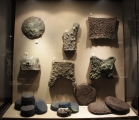

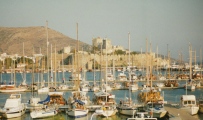
Do not use the above information on other web sites or publications without permission of the contributor.
Click here to see more info for this site
Nearby sites
Click here to view sites on an interactive map of the areaKey: Red: member's photo, Blue: 3rd party photo, Yellow: other image, Green: no photo - please go there and take one, Grey: site destroyed
Download sites to:
KML (Google Earth)
GPX (GPS waypoints)
CSV (Garmin/Navman)
CSV (Excel)
To unlock full downloads you need to sign up as a Contributory Member. Otherwise downloads are limited to 50 sites.
Turn off the page maps and other distractions
Nearby sites listing. In the following links * = Image available
840m NW 326° Halicarnassus Mausoleum* Chambered Tomb
1.2km NW 324° Halicarnassus* Ancient Village or Settlement
17.6km W 278° Myndos* Ancient Village or Settlement
23.1km SW 222° Kos Temple of Asklepios* Ancient Temple
23.6km NE 42° Bargylia Ancient Village or Settlement
30.7km NNE 27° Iasos* Ancient Village or Settlement
34.4km ENE 59° Incirliin Cave* Cave or Rock Shelter
38.8km S 187° Knidos* Ancient Village or Settlement
42.2km NNW 339° Didyma Temple of Apollo* Ancient Temple
42.3km NNW 339° Didyma Sanctuary of Artemis* Ancient Temple
43.9km NNE 30° Euromos* Ancient Village or Settlement
44.0km NE 44° Gumuskesen* Chambered Tomb
44.2km SE 131° Triopion Temple of Apollo* Ancient Temple
44.4km NE 45° Mausoleum of Hecatomnus Chambered Tomb
51.6km NNE 12° Mount Latmos* Rock Art
53.0km N 9° Heracleia* Ancient Village or Settlement
55.2km NE 39° Labranda* Ancient Village or Settlement
57.1km NNW 346° Miletus* Ancient Village or Settlement
58.2km WNW 287° Leros Temple of Artemis Ancient Temple
59.1km SE 142° Symi Castle Stone Fort or Dun
63.1km N 360° Myous* Ancient Village or Settlement
64.2km ENE 61° Stratonikeia* Ancient Village or Settlement
66.0km S 185° Charkadio Cave* Cave or Rock Shelter
66.4km NE 54° Lagina Temple of Hecate* Ancient Temple
68.4km NNE 31° Alinda* Ancient Village or Settlement
View more nearby sites and additional images


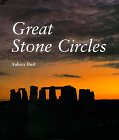


 We would like to know more about this location. Please feel free to add a brief description and any relevant information in your own language.
We would like to know more about this location. Please feel free to add a brief description and any relevant information in your own language. Wir möchten mehr über diese Stätte erfahren. Bitte zögern Sie nicht, eine kurze Beschreibung und relevante Informationen in Deutsch hinzuzufügen.
Wir möchten mehr über diese Stätte erfahren. Bitte zögern Sie nicht, eine kurze Beschreibung und relevante Informationen in Deutsch hinzuzufügen. Nous aimerions en savoir encore un peu sur les lieux. S'il vous plaît n'hesitez pas à ajouter une courte description et tous les renseignements pertinents dans votre propre langue.
Nous aimerions en savoir encore un peu sur les lieux. S'il vous plaît n'hesitez pas à ajouter une courte description et tous les renseignements pertinents dans votre propre langue. Quisieramos informarnos un poco más de las lugares. No dude en añadir una breve descripción y otros datos relevantes en su propio idioma.
Quisieramos informarnos un poco más de las lugares. No dude en añadir una breve descripción y otros datos relevantes en su propio idioma.